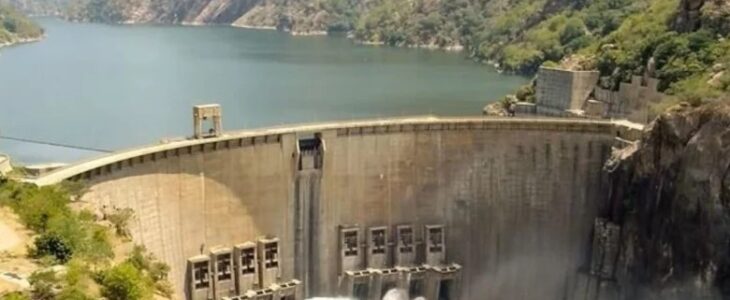
The federal government has revealed its plan to construct five buffer dams to contain incessant flooding arising from the release of water from Cameroon’s Lagdo Dam.
The plan was disclosed by the Director-General of the Nigeria Hydrological Services Agency (NIHSA), Umar Mohammed during Channels Television’s The Morning Brief breakfast programme on Thursday.

Nigerians in floodplains were warned by the agency to relocate to safer places due to the expected floods precipitated by the release of water from the Lagdo Dam.
Flood-prone states listed by NIHSA include Adamawa, Taraba, Benue, Nasarawa, Kogi, Edo, Delta, Anambra, Bayelsa, Cross Rivers, and Rivers.

Represented by the Agency’s Director of Operations and Hydrology, Femi Bejide, Mohammed stated that a report has been submitted to the Presidency to address the issue and that some of dams in the country have to be de-silted.
“What has to be done also is that there’s a report that has been submitted to the Presidency. We have to have buffer dams and five have been proposed and the Federal Government is looking at that already.
“But in the interim, some of our dams have to be de-silted, the tributaries of River Niger and Benue have to be expanded.
“I learnt that there is a little issue with the design and they are trying to amend the design. I believe that in the next two to three years that would have been put in place,” he said.
The update comes after the federal government alerted citizens to the water release from the Lagdo Dam in Cameroon on Tuesday.
Speaking in a statement signed by Mohammed, Nigerians were informed that the authorities of the Lagdo Dam in Cameroon would initiate controlled water releases starting from Tuesday, September 17, 2024.
“The Nigeria Hydrological Services Agency wishes to notify the general public that the authorities of the Lagdo Dam in Cameroon have communicated to the agency that they will initiate controlled water releases at a rate of 100m³/s (8,640,000m³/day) starting today, 17 September 2023.
“The water discharge is anticipated to progressively escalate to 1000m³/s over the next seven days based on the inflow from the upstream Garoua River, which serves as the primary source into the reservoir and a significant tributary to the Benue River.
“Nonetheless, the dam operators have indicated that the planned water discharges will be gradual to avoid surpassing the conveyance capacity of the Benue River system and triggering substantial flooding downstream in Nigeria.
“The overflow from the Lagdo Dam is projected to cease once there is a noticeable reduction in the flow into the Lagdo reservoir,” the statement partly reads.
Credit: The Sun
